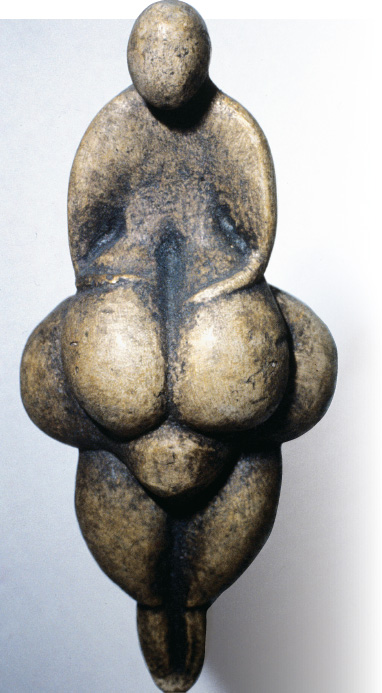A History of Western Society: Printed Page 7
A History of Western Society, Value Edition: Printed Page 6

PRIMARY SOURCE 1.1
Paleolithic Venus Figures

Written sources provide evidence about the human past only after the development of writing, allowing us to read the words of people long dead. For most of human history, however, there were no written sources, so we “read” the past through objects. Interpreting written documents is difficult, and interpreting archaeological evidence is even more difficult and often contentious. For example, small stone statues of women with enlarged breasts and buttocks dating from the later Paleolithic period (roughly 33,000–9,000 B.C.E.) have been found in many parts of Europe. These were dubbed “Venus figures” by nineteenth-century archaeologists, who thought they represented Paleolithic standards of female beauty just as the goddess Venus represented classical standards. A reproduction of one of these statues, the six-inch-tall Venus of Lespugue made from a mammoth tusk about 25,000 years ago in southern France, is shown here.
EVALUATE THE EVIDENCE
Question
As you look at this statue, does it seem to link more closely with fertility or with sexuality? How might your own situation as a twenty-first-century person shape your answer to this question?
Question
Some scholars see Venus figures as evidence that Paleolithic society was egalitarian or female dominated, but others point out that images of female deities or holy figures are often found in religions that deny women official authority. Can you think of examples of the latter? Which point of view seems most persuasive to you?